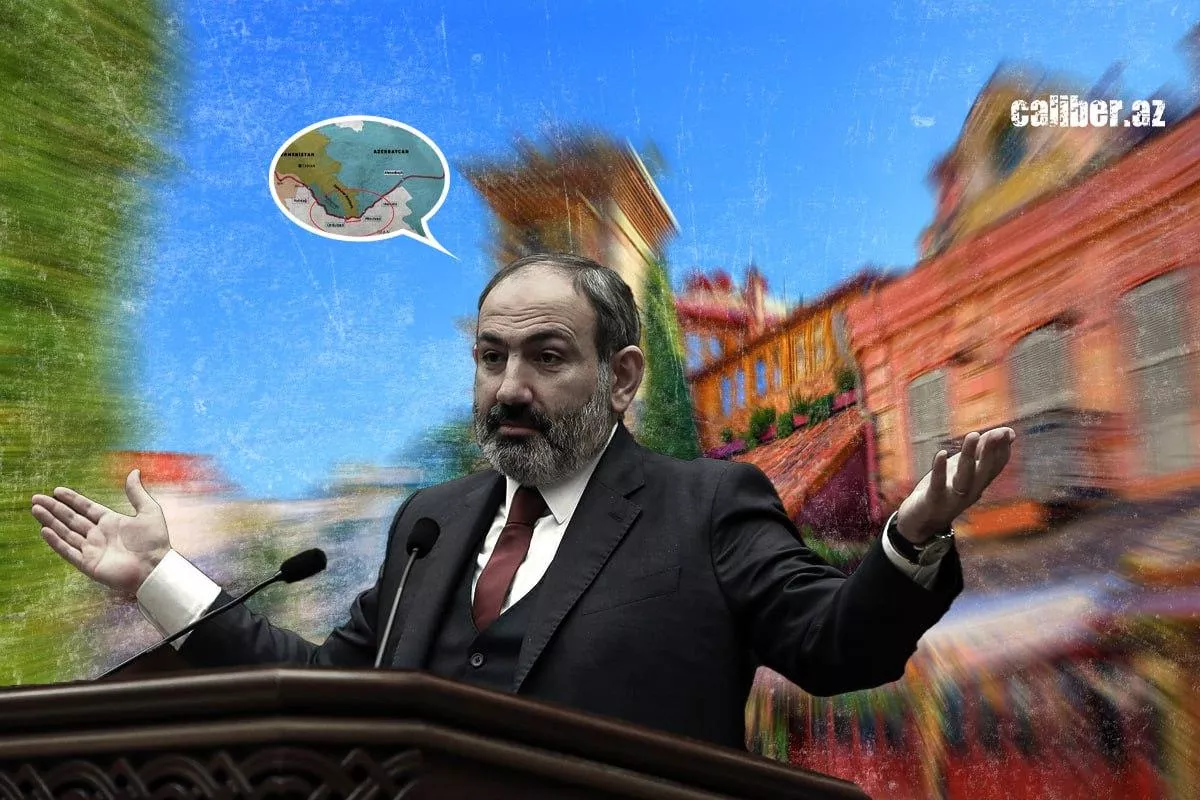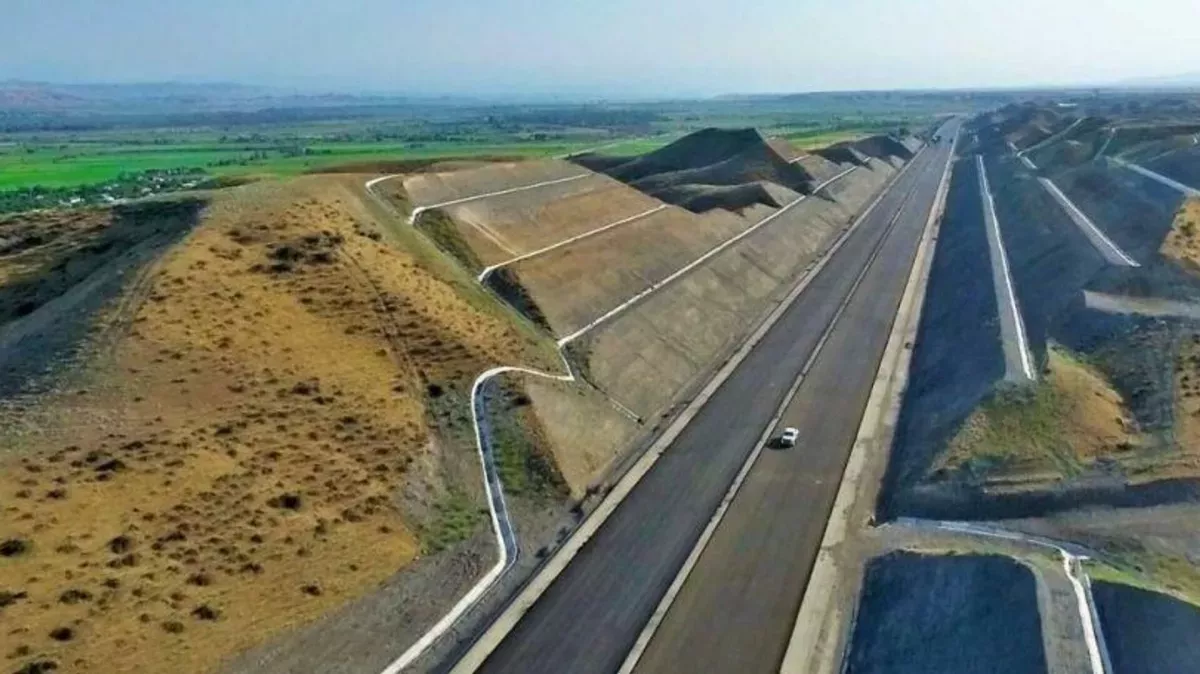Armenian "Crossroads of Peace": fantasy and reality Pashinyan’s Miscalculations
Throughout its history, the South Caucasus has been a crossroads for trade routes across the vast Eurasian continent. Azerbaijan's establishment of full control over its territory and the signing of the Trilateral Agreement on November 10, 2020, have created excellent conditions for unblocking all roads in the region and fully unlocking its transportation potential.
However, these advantageous processes for all countries are being hindered by the destructive policies of Yerevan, which promotes its own unviable constructs. During the recent conference titled "Crossroads of Peace: Uniting Security and Democracy," Armenian Prime Minister Nikol Pashinyan once again outlined unrealistic fantasies about the transportation future of the region.
For the fourth year now, Azerbaijan has been implementing a large-scale program for the revival of the liberated Karabakh and East Zangezur economic regions. Special emphasis has been placed on developing road and rail infrastructure in the region, including components of the prospective Zangezur corridor, the opening of which is crucial for expanding the potential of the Middle Corridor and significantly increasing transit traffic between the East and the West. The existence of such potential is evidenced by the fact that during the Soviet era, transportation lines extending through Zangezur carried 7 to 12 million tons of cargo annually.
Unfortunately, despite the provisions of the Trilateral Statement of November 10, 2020, Yerevan has not taken any concrete steps to open transport communications in the region over the past four years. Yerevan has rejected constructive dialogue on unblocking the highway and laying down "steel" routes from the Azerbaijani border at Aghband through Armenia's Syunik region (Zangezur) to the transport arteries of the Nakhchivan Autonomous Republic of Azerbaijan, as was intended in the framework of the Trilateral Statement.
It is worth noting that point 9 of the Trilateral Statement clearly outlines Armenia's commitments regarding the opening of communications, and a working group at the level of deputy prime ministers of Azerbaijan, Russia, and Armenia was established for this purpose in January 2021. However, after nearly four years, not only has construction work not begun in the "country of stones," but efforts are also being made to distort the meaning of the Trilateral Statement on the ceasefire and to avoid fulfilling the obligations undertaken.
On the contrary, the government led by Nikol Pashinyan is tenaciously promoting an alternative to the Azerbaijani project for unblocking transport communications—the so-called "Crossroads of Peace" project. Speaking recently in Yerevan at the conference titled "Crossroads of Peace: Uniting Security and Democracy," the Armenian prime minister reminded that the capacity of the Russia-West border has significantly decreased due to events in Ukraine, sanctions, and the complicating political relations, and that alternative routes are now required to facilitate the flow of goods worth hundreds of billions of dollars.
"In the region, over 70 per cent of Armenian borders are stagnant; the borders do not serve to ensure the flow of these goods. The essence of the ‘Crossroads of Peace’ project is for Armenia to contribute to servicing these enormous economic flows. Moreover, the needs of Central Asian countries for imports and exports are by no means secondary here. The main idea is for Armenia to offer its services for the promotion of goods and services both east to west and west to east, as well as south to north and north to south," Pashinyan stated. Furthermore, the prime minister noted that this initiative could bring Armenia tens of billions of dollars in profit.

Armenia has repeatedly announced ambitious and equally unfeasible logistical projects; however, being stuck in a 30-year transportation deadlock and lacking railway connections not only with Azerbaijan and Türkiye but also failing to establish one even with "friendly" Iran, Armenia has, by definition, never been regarded as a regional transportation hub.
It is worth noting that all long-term attempts by Armenia to establish "steel" railways to Iran have ended in complete failure. The complex mountainous terrain necessitates the construction of tracks through tunnels and bridges, and current cost estimates indicate that this would require at least $5 billion. Neither India nor sanctions-hit Iran is willing to shoulder such expenses, especially given the questionable profitability. Without a continuous railway connection, any prospects of transforming the previously announced "Persian Gulf - Black Sea" project into a full-fledged component of the "North-South" corridor are bleak, as transporting goods by truck will always be significantly more expensive, calculated per ton/kilometer, than rail transport.
Currently, in Yerevan, unimplemented adventurous projects from past years have been repackaged under the new name "Crossroads of Peace," but the essence of the problem remains unchanged—without normalizing relations with Baku and Ankara, their effectiveness and return on investment will not justify the costs incurred in building infrastructure. In fact, some Armenian media acknowledge the utopian nature of the prime minister's statements. For instance, the Armenian publication "Zham.am" notes that the project proposed by Pashinyan, "Crossroads of Peace," is unfeasible due to Armenia's lack of access to the sea, weak transportation infrastructure, and the inability to attract investment for large transport projects. All of this puts Armenia at a disadvantage compared to its neighbours, particularly Azerbaijan, which is part of significant regional initiatives. Moreover, "Zham.am" believes that the "Crossroads of Peace" project is, in fact, a deception that could eventually provoke frustration among all parties involved, leading the countries in the region to collectively decide to punish Armenia for such an unconstructive approach.
Pashinyan's statements that the implementation of the "Crossroads of Peace" project will bring Armenia tens of billions of dollars in profit appear almost anecdotal, if not outright absurd. In reality, the figures are much more modest. For example, considering the Armenian-Georgian transit statistics: in the first half of 2024, 99,760 Armenian trucks transited through Georgia, with transit fees estimated at $12.97 million. Since 2021, Georgia has earned approximately $73 million from the transit of Armenian trucks, a figure that is still far from reaching even one billion dollars.
It is also important to remember that during the winter months, the mountainous routes at the Georgian Upper Lars pass are often impassable for months due to snowfall and landslides. Even with a steady transit flow, the economic benefits for Armenia would remain quite modest. To achieve the billion-dollar revenues mentioned by Pashinyan, around 77 million trucks would need to pass through Armenia (with each truck having an average carrying capacity of 10 tons, considering the challenging Armenian terrain), which seems unrealistic.
Moreover, no freight forwarder would choose to transport such a large number of low-capacity trucks when there is the Trans-Caspian International Transport Route (TMTM), which facilitates cargo transit via the recently modernized Baku-Tbilisi-Kars (BTK) railway line, whose capacity has increased from 1 to 5 million tons.
For comparison, a single train with 60 platforms for transporting standard containers can carry up to 3,600 tons of cargo or more in one trip, equivalent to the total weight of 360 trucks. In other words, the profitability of Azerbaijani railway routes is clearly unmatched.
Moreover, since the 44-day victorious war, Azerbaijan has been rapidly constructing the 123.6 km Goranboy-Jabrayil-Zangilan-Aghband highway as part of the Zangezur corridor initiative, with about 90% of the work already completed. Additionally, nearly 60% of the 110.4 km railway segment, which runs through the Jabrayil and Zangilan districts to the border town of Aghband, near Armenia and Iran, has also been laid.

Today, Armenia is obstructing the extension of the corridor through Zangezur, including proposing alternative routes in the Kalbajar and Gazakh regions, despite the fact that these roads traverse challenging mountainous terrain and are impassable for long periods during the harsh winter months. In contrast, the 46-kilometer railway from Aghband (Azerbaijan) to Yerasx (Arazdayan, Armenia) runs in a lowland area, making it accessible year-round, and its construction is estimated to cost around $230 million. Considering Russia's readiness to finance these expenses, this represents an optimal option for Armenia.
However, Yerevan is rejecting Russian financial assistance and is unwilling to entertain the idea of Russian control over international corridors. "None of the points in the Trilateral Statement from 2020 imply any restriction of Armenia's sovereign rights over its territory," stated Nikol Pashinyan during the conference "Crossroads of Peace: Uniting Security and Democracy." "Representatives of the Russian Federation may only be granted a monitoring role to observe how Armenia fulfils its obligations."
The Armenian prime minister also baselessly accused Azerbaijan of fearing that the revenues from the implementation of the "Crossroads of Peace" project could be used to strengthen Armenia's defence capabilities. This is truly a case of "blaming the healthy for the sick." "Point 9 of the Trilateral Statement clearly outlines Armenia's obligations regarding the opening of communications and how control over transport routes should be implemented," said Aykhan Hajizada, the spokesperson for the Azerbaijani Foreign Ministry, commenting on Pashinyan's recent statements at the conference.
However, non-compliance with agreements is typical for the Armenian government, and in this regard, Azerbaijan has alternative options. On March 11, 2022, the governments of Azerbaijan and Iran signed a memorandum to establish new communication links between Azerbaijan's East Zangezur economic region and the Nakhchivan Autonomous Republic through the territory of the Islamic Republic. The project includes the construction of a 55 km highway, as well as a parallel railway line from Imishli (Azerbaijan) to Parsabad (Iran), which will involve the construction of four border bridges across the Araz River and the connection of railways and roads already in Nakhchivan.
Moreover, construction has already begun on the 224-km section from Kars to Igdir, Aralık, and Dilucu, connecting to the railway network of the Nakhchivan Autonomous Republic, as recently announced by Türkiye's Minister of Transport and Infrastructure, Abdulkadir Uraloglu. According to him, 10% of the work will be completed by the end of 2024, and the entire project is expected to finish around 2028. With the commissioning of the Turkish "Iron Silk Road" infrastructure, delays in negotiations by Armenia and initiatives like the "Crossroads of Peace" will no longer have significant importance for the transport map of the region.








